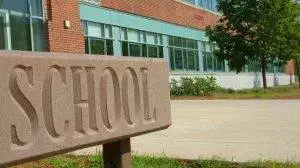The impact of schools on home values is a crucial consideration for potential homebuyers. Many people want to know how the quality of schools, whether good or bad, affects the value of homes and what specific influence they have. When it comes to buying a home, there are many factors to consider, including the neighborhood atmosphere, size of the house, outdoor features, upgrades, and the overall location. School districts have increasingly become an important factor in the decision-making process for potential homebuyers. While families with young children or those planning to start a family are often the most concerned about living in a good school district, there are benefits for individuals or couples without immediate plans for children as well.

This article aims to explore the various ways in which school districts impact home values, explain how buyers can conduct thorough research on potential school districts before buying a home, and highlight the noticeable differences in home values between high-performing and lower-performing school districts.
1. The Impact of Schools on Property Values
Exploring the connection between educational institutions and real estate, the influence of schools on home values is a multifaceted topic. Economists have found that a 5% increase in test scores within suburban neighborhoods can lead to a 2.5% rise in home prices. While this is just one aspect of determining a good school district, it holds significance in gauging educational quality.

When considering the real estate market, potential homebuyers often prioritize investing in homes located in affluent school districts. Test scores are just one factor considered, as other important elements contribute to the overall reputation of a school district. However, the appeal of a strong school district often results in buyers willing to pay higher prices for their homes, avoiding the high costs of private education, which can exceed $20,000 annually in some areas.
Choosing to purchase a home in a robust school district, despite the higher upfront cost, can be a smart financial move compared to the expense of private schooling. Sellers aware of this trend can capitalize on buyers’ willingness to pay a premium for homes in sought-after school districts, potentially selling their homes above market value. This influx of transactions above market value contributes to an overall increase in home values, highlighting the impact of school choices on property values.
Private education also plays a role in property values, as proximity to esteemed private schools can positively influence home prices. Those living near renowned private schools often see higher property values due to the benefits associated with the educational environment.
The relationship between schools and property values goes beyond statistical correlations. It involves economic decisions, educational priorities, and strategic real estate investments. Understanding these factors sheds light on how schools affect the perceived value of residential properties.
2. The Influence of Educational Quality on Residential Property Values
An in-depth study conducted by the prestigious Brookings Institution has shed light on the complex relationship between the quality of schools and residential property values. The research, which examined one hundred of the largest metropolitan areas in the United States, revealed a significant difference in home prices based on the performance of local schools. On average, houses located in high-performing school districts were found to be priced $205,000 higher than those in lower-performing districts. This stark contrast underscores the tangible economic consequences associated with the quality of education in a given area.

Furthermore, the study uncovered additional dimensions to this relationship. Homes near high-performing schools not only commanded higher prices but also boasted larger physical dimensions, with an average of 1.5 more rooms compared to residences in lower-performing school districts. This finding highlights the multifaceted nature of buyer preferences, where the appeal of superior education intertwines with the tangible attributes of larger living spaces.
Moreover, the study delved into the realm of rental options within these educational spheres. It found that rental availability was approximately thirty percent lower in volume within high-performing school districts. This intriguing dynamic suggests a heightened demand for housing in areas with commendable schools, further substantiating the notion that individuals are willing to make considerable financial investments to secure residency in the vicinity of esteemed educational institutions.
These findings have far-reaching implications, revealing the depth of the impact that the quality of schools can have on residential property values. Residents in areas with high-performing schools are willing to pay a premium not only for superior education but also for the associated benefits of larger living spaces and a more restricted rental market. This comprehensive exploration offers a nuanced understanding of how the educational landscape significantly shapes the economic dynamics of the real estate market.
3. The Relationship Between Public School Ratings and Residential Property Values
Embarking on a nuanced exploration of the intricate relationship between public school ratings and property values unravels a tapestry of insights that emanate from the esteemed National Bureau of Economic Research. Pioneering this inquiry, a comprehensive report titled “School Spending Raises Property Values” sheds light on the profound correlation between school expenditures and the valuation of homes, elevating the discourse on the economic implications of investments in public education.

The seminal findings of the report underscore a compelling statistical relationship, revealing that heightened school expenditures wield a transformative impact on residential property values. According to the meticulous analysis, for every dollar allocated to public schools within a given area, there is a consequential augmentation of $20 in the values of homes situated in that community. This staggering correlation not only accentuates the pivotal role that educational investments play in shaping local economies but also unveils the intricate web of connections between academic funding and the financial underpinnings of residential real estate.
A salient aspect illuminated by these findings is the broad-reaching impact of additional school expenditures. Contrary to a narrative solely focused on families with children enrolled in the public school system, the report posits that all homeowners within the community stand to benefit from increased school spending. This inclusive effect underscores the communal nature of the correlation, where the economic advantages ripple across the entire residential landscape, enriching the value of properties irrespective of direct involvement in the educational system.
This comprehensive exploration demystifies the intricate dynamics between public school ratings and property values, transcending mere statistical associations to unveil a profound interdependence. The revelations from the National Bureau of Economic Research affirm the far-reaching implications of educational investments, painting a nuanced picture of how the economic vitality of a community is intricately woven into the fabric of its educational pursuits. This discourse invites stakeholders, from policymakers to homeowners, to consider the broader ramifications of educational funding decisions, recognizing their tangible impact on the cherished notion of home values.
4. The Impact of New School Construction on Residential Property Values
Delving into the complex dynamics surrounding the construction or renovation of a new school and its potential ramifications on residential property values unveils a multifaceted narrative, as elucidated by a comprehensive study published in the Economics of Education Review. This exploration seeks to demystify the nuanced relationship between the establishment or refurbishment of educational institutions and the consequent effects on home values, shedding light on both the immediate challenges and the long-term benefits associated with such endeavors.

The study’s findings, rooted in empirical evidence, highlight a noteworthy pattern in student performance during the initial years following the construction or renovation of a school. Intriguingly, the research posits that students exhibit lower scores on standardized tests during the early phases of construction. This decline is attributed to the inherent disruptions caused by ongoing construction projects, creating an environment where students contend with distractions that can impede their academic focus.
However, the narrative takes a positive turn as the study unfolds, emphasizing that this temporary decline in test scores is a transient phenomenon. Once the construction activities reach completion and students are no longer contending with disruptions, the research suggests a remarkable rebound in student test scores. Notably, the study underscores that these improvements are not merely a fleeting consequence but rather contribute to a sustained positive trajectory in student performance over the long term.
For homeowners contemplating the sale of their properties within districts currently undergoing school construction, the study offers valuable insights into strategic decision-making. If feasible, delaying the sale until the completion of the construction phase may prove beneficial. The anticipation is that test scores, having rebounded post-construction, will serve as a more robust selling point to potential buyers evaluating the desirability of the school district.
This in-depth examination navigates the ebb and flow of the impact associated with new school construction on residential property values. It underscores the temporal challenges that may surface during construction, emphasizing the importance of a comprehensive understanding of the educational landscape. Moreover, it encourages a strategic approach for homeowners, allowing them to leverage the long-term benefits that emerge once the transformative improvements to the school environment are realized.
5. Balancing School Districts with Overall Home Preferences
Embarking on the journey of homebuying requires a comprehensive perspective that goes beyond just focusing on a residence in a reputable school district. While the quality of the school district is important, it’s crucial to consider a wider range of factors that contribute to finding the ideal home. This thorough exploration encourages prospective homebuyers to reflect on their priorities and ask essential questions that go beyond school districts, to gain a more nuanced understanding of their housing needs.

When envisioning your dream home, it’s important to consider various aspects beyond the educational landscape. Do you require a large backyard for your family? How many bedrooms are essential for your household? Does living close to your workplace play a significant role in your decision-making process? These questions prompt a thoughtful examination of personal priorities, enabling a more informed and well-rounded approach to the home-buying process.
A common mistake made by buyers is becoming solely fixated on residing in a sought-after school district. While it’s understandable to desire a home in these esteemed educational areas, it’s important not to overlook other crucial aspects that contribute to the perfect living space. For example, if the financial constraints of securing a four-bedroom home with ample square footage and outdoor space within a prestigious school district prove to be prohibitive, it might be necessary to reassess priorities.
Private schools, although often associated with high costs, can be a viable alternative for families facing budgetary constraints within affluent school districts. Consider this perspective: if private school tuition for two children amounts to $25,000 annually, the total over thirteen years (from ages 5 through 18) reaches $325,000. While this is a significant investment in education, it prompts a comparison against the financial outlay associated with living in a high-profile school district. Evaluating not only the home price but also considering taxes and other expenses provides a comprehensive view of the economic landscape.
Importantly, this decision-making process goes beyond financial considerations. It’s crucial to delve into the sacrifices that might be necessary when residing in a prestigious school district. Will it mean compromising on the size of your living space? Will you have to give up on having a spacious backyard that might be attainable in a different school district? Additionally, considering the potential impact on commute times to work adds further complexity to the decision-making process.
The wise choice might involve exploring homes in a less prestigious school district while also considering the option of private schooling for children. This strategic approach aims to align educational priorities with overall lifestyle preferences, creating a balanced framework for making informed decisions when buying a home. Ultimately, this approach advocates for considering various elements holistically, guiding prospective buyers toward finding a harmonious balance between their educational aspirations and broader housing needs.
6. Finding the Median Home Price in a School District
Determining the median home price in a school district requires a systematic approach, which can be demystified for prospective homebuyers. This process aims to provide clarity on the steps involved in unraveling this important metric and offers guidance on navigating the range of property sale prices within a specific educational area.

To find the median home price, the first step is to gather all the sale prices of properties within the targeted school district. Once collected, these prices are organized in ascending order, from lowest to highest. The next step involves identifying the middle number in this ordered list, which represents the median price for homes in the school district. Essentially, it represents the value that falls exactly in the middle of the dataset, providing a balanced perspective on the prevailing home prices.
To illustrate this process, let’s consider a hypothetical scenario where you are evaluating 800 homes in a specific school district. The dataset includes the sale prices of all these homes. The next step is to arrange these prices in ascending order, creating a list that ranges from the least expensive to the most expensive properties. The crucial task is then to locate the 400th number on this ordered list. This number serves as the median home price for the school district being considered.
This systematic approach serves as a helpful tool for those seeking clarity on the median home price in a targeted school district. By demystifying the process of arranging and extracting the middle value from property sale prices, prospective homebuyers gain a better understanding of the current real estate landscape. Armed with this knowledge, individuals can make informed decisions that align with their budget and housing aspirations within their chosen educational area.
7. The Impact of School Districts on Home Sales
The realm of real estate sales requires a deep understanding of the various factors that can affect the value and marketability of a property. A well-known real estate investor conducted a study that explores the complex relationship between school districts and home sales. This study aims to provide insight into the tangible effects that school district ratings can have on property values, especially during times of market volatility.

The study involved a thorough analysis of schools using a platform that uses a rigorous five-star rating system. This comprehensive evaluation takes into account different metrics such as student-to-teacher ratios, enrollment numbers, test scores, and other influential factors. The study found a significant difference in the resilience of home values during economic downturns based on school district ratings. Schools with a four or five-star rating showed remarkable protection against declining home values, providing homeowners with a safeguard even in a recession. On the other hand, schools with one to three stars experienced significant losses, highlighting the important role that school district quality plays in influencing property values.
This knowledge becomes a valuable asset for homeowners, particularly during times of market volatility. With the understanding that homes in highly regarded school districts are less vulnerable to value erosion during economic contractions, sellers are better equipped to navigate the complexities of the real estate market. In strong markets, the beneficial impact of a reputable school district becomes even more apparent, potentially allowing sellers to command prices higher than the prevailing market rates.
Moreover, the appeal of homes in top-performing school districts extends beyond protection against market fluctuations. The study indicates that such properties tend to sell more quickly, as buyers are more inclined to act swiftly when purchasing homes in well-regarded educational areas.
This in-depth analysis highlights the significant connection between school districts and home sales, providing a strategic perspective for sellers. The findings from the study emphasize the crucial role of school district ratings, not only in preserving property values during economic downturns but also in enhancing market desirability and potentially securing higher prices. This knowledge empowers homeowners to navigate the real estate market with a greater understanding of the multifaceted impact that school districts have on the salability and value of their properties.
8. The Impact of Living within Walking Distance to a School on Home Values
Examining the factors that influence residential property values, a study published in the Journal of Agricultural and Applied Economics reveals the significant role of schools in this equation. Focusing on Greenville, South Carolina, the study analyzes the relationship between homes and schools and their impact on the economic worth of residential properties.

Conducted in Greenville, the study delves into various residential properties to explore the connection between their proximity to schools and their market values. One notable finding is the correlation between living within walking distance of a school and higher property values. Homes located close to educational institutions tend to have stronger market values compared to those situated farther away.
While proximity is important, the study emphasizes that the quality and ranking of the school itself are the primary influencers on property values. In other words, the excellence of the educational institution outweighs mere proximity. However, the distance to and from the school still contributes to the enhancement of home values.
This understanding has implications for homeowners and potential buyers. For those living near prestigious schools, the study suggests an advantage in terms of property values. The convenience and accessibility of being within walking distance of a school positively resonate within the real estate market.
This study invites stakeholders in real estate to recognize the relationship between residential property values and proximity to schools. While the quality of the school is the main influencer, proximity, especially within walking distance, also contributes to the desirability and economic worth of homes. This knowledge provides homeowners and potential buyers with a deeper understanding of the complex dynamics that shape the property values of schools.
9. The Pros and Cons: The Considerations of Living Adjacent to a School
When choosing a place to live, it is essential to think about the benefits and drawbacks of living next to a school. This decision necessitates a thorough examination of the pros and cons associated with proximity to a school, considering the factors that individuals and families may consider when making such an important decision.

Pros:
– Convenience for Parents: Living next to a school makes it convenient for parents to transport their children to school, reducing commute times and making daily routines more manageable.
– Sense of Security: Proximity to a school can provide a sense of security for parents, especially those with children who have allergies or specific medical needs, as help is readily available.
– Access to Playground: Families with young children can benefit from having easy access to elementary school playgrounds after school hours, providing a recreational space close to home.
– Appealing Neighborhood: The presence of a school and its facilities can enhance the appeal of the neighborhood, particularly for families with school-going children.
Cons:
– Increased Traffic: Living next to a school can lead to increased traffic during peak hours, especially during morning drop-off and afternoon pick-up times, which may contribute to congestion and potential safety concerns.
– Noise Disruption: The higher traffic levels can result in elevated noise levels, disrupting the peace of the neighborhood, and residents may need to contend with the periodic hustle and bustle.
– Student-Generated Noise: School-related activities, such as outdoor recess, can generate additional noise, potentially disrupting the daily routine and tranquility of households, particularly those with infants or toddlers.
– Potential Impact on Property Values: Depending on the specific circumstances, the constant activity and noise associated with living next to a school might impact property values negatively for some individuals.
The decision to live next to a school necessitates a careful consideration of the advantages and disadvantages of such proximity. While the convenience of shorter commutes and access to school amenities may be appealing, it is also crucial to take into account potential drawbacks such as increased traffic noise and disruptions during outdoor school activities. This comprehensive evaluation aims to provide individuals and families with a thorough understanding of the various factors involved in living next to a school, enabling them to make informed choices that align with their lifestyle preferences and priorities.
10. Strategies to Identify a Good School District
When searching for a suitable school district for your family, it is important to take a strategic approach and utilize various resources and insights. Thankfully, several online platforms can assist you in this quest by providing comprehensive data on standardized test scores, average classroom sizes, student completion rates, and other important factors that contribute to the overall educational landscape.

Websites that evaluate schools are valuable tools that offer a holistic overview of potential school districts. These platforms allow prospective buyers to review key metrics, enabling them to make informed comparisons between different districts. Some important considerations include standardized test scores, which provide insight into academic performance, as well as average classroom sizes, which impact the level of personalized attention students receive. Additionally, information on student completion rates can indicate the district’s commitment to fostering academic success.
To further refine your search, these online tools allow you to explore specific school types, such as magnet, alternative, charter, special education, technical, and vocational institutions. This level of detail allows for a tailored exploration that aligns with the unique educational needs and preferences of your prospective student.
However, it is important to note that the search for a great school district should not solely rely on online research. Your real estate agent can be an invaluable resource in this endeavor. These professionals are intimately familiar with the neighborhoods they serve and may even have children attending local public schools. Even if their children do not attend public schools, their experience in the real estate landscape equips them with valuable insights into school districts and the broader education system that may not be readily available through online research.
Consulting with your real estate agent is a pivotal step in the process. Their firsthand knowledge and experience can provide a nuanced understanding of the strengths and challenges of different school districts. They may offer perspectives on community dynamics, extracurricular offerings, and other intangible factors that significantly contribute to the overall educational experience.
Finding a good school district requires a comprehensive and multi-faceted approach. By utilizing online resources for quantitative data and combining it with the qualitative insights provided by a knowledgeable real estate agent, you can create a robust strategy. This combined effort ensures that your search for an exemplary educational environment aligns with the unique needs and aspirations of your family, ultimately leading you to a school district that fosters academic excellence and overall well-being.
To conclude, the key aspect to keep in mind regarding school districts is that each child possesses unique educational needs. While some excel in competitive settings, others may feel overwhelmed by peer pressure. Beyond evaluating factors like test scores, classroom size, and student performance, it is crucial to assess the school’s overall environment to ensure a robust support system that prioritizes student well-being.
Even if you don’t have children or have no plans to start a family, it remains advantageous to explore homes in high-quality school districts. This decision is likely to result in an increase in your property’s value over time. Collaborating with a local real estate agent offers numerous benefits, including discussions about school districts, administrative aspects, after-school programs, and other educational inquiries. Additionally, they can provide insights into whether you are paying a fair price for a home in a strong school district and offer guidance on setting an appropriate list price when selling your property.






